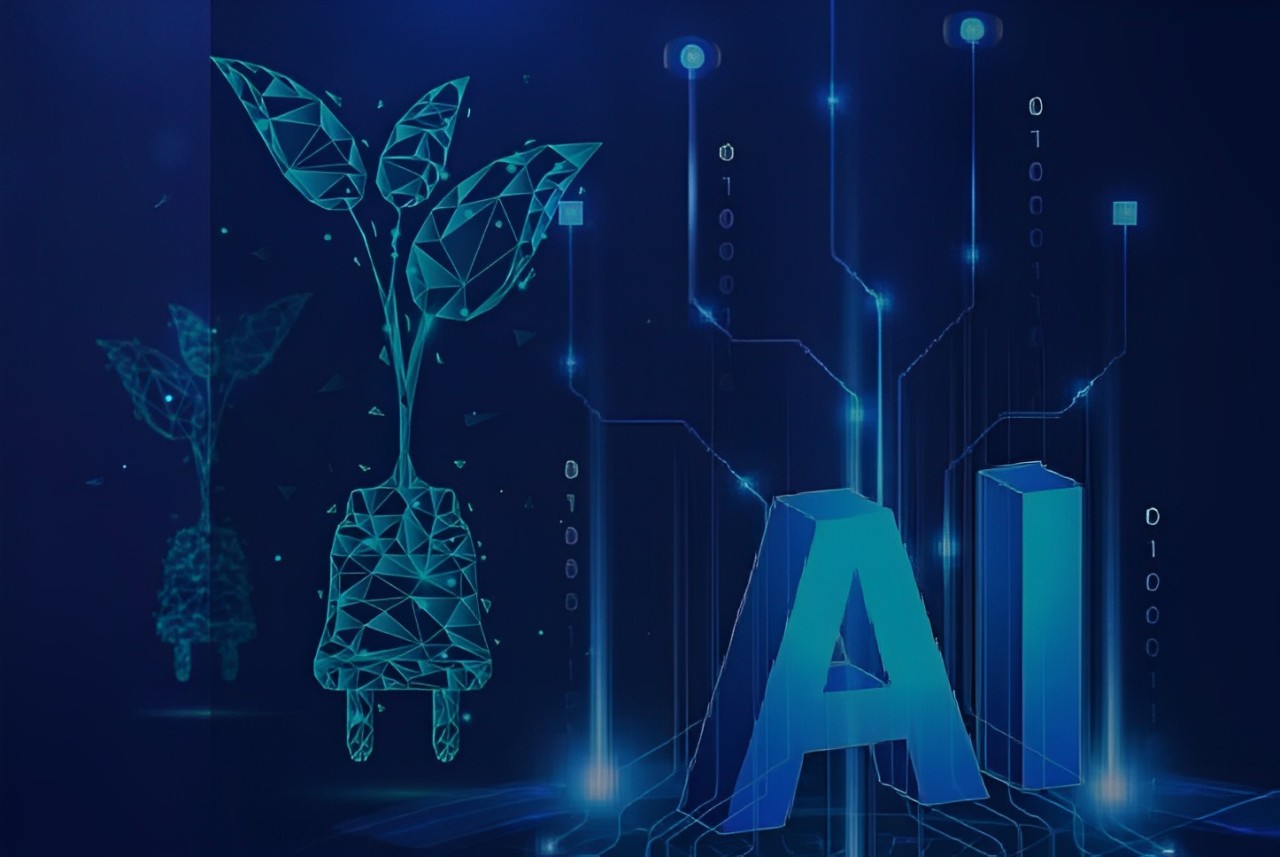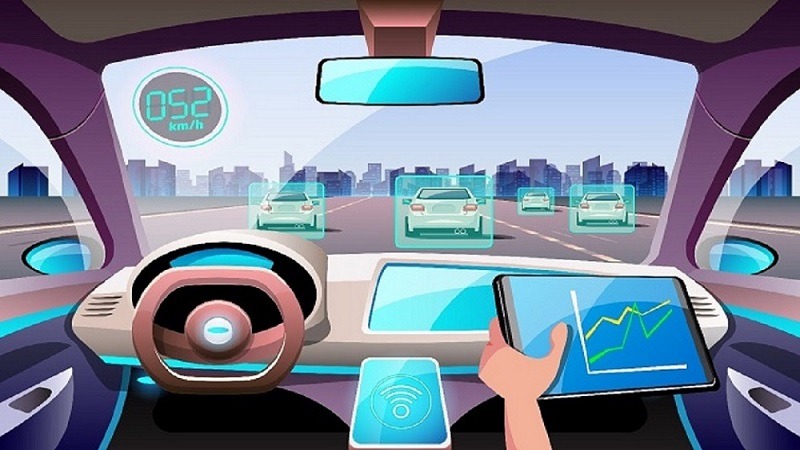Introduction: Planet with AI
Notwithstanding natural difficulties, the crossing point of Artificial Intelligence (AI) and environmental change displaying arises as an encouraging sign. AI technologies are revolutionizing our approach to understanding, predicting, and mitigating the effects of climate change as the global community struggles with the urgent need for sustainable solutions. This article investigates the extraordinary capability of AI in environmental change, digging into the AI arrangements, difficulties, and aggregate liability we share in defending the fate of our planet.
1. The Criticalness of Environmental Change:
One of the most pressing issues of our time is climate change caused by human activities like deforestation, industrialization, and the burning of fossil fuels. Increasing worldwide temperatures, outrageous climate occasions, and interruptions to biological systems present critical dangers to biodiversity, human social order, and the general solidness of the planet. To limit the extent of these effects and transition to a future that is more resilient and sustainable, immediate action is required.
2. Different Types of Climatic Changes That Have An Impact On The Common People:
Natural changes can significantly affect individuals’ lives, influencing different parts of their prosperity, well-being, and livelihoods. Changes in the environment can have a significant impact on human populations in the following ways:

3. Climate changes:
- Temperature Limits: Climbing worldwide temperatures can prompt more successive and extraordinary heatwaves, influencing human well-being and expanding the gamble of intensity-related diseases.
- Outrageous Climate Occasions: Expanded recurrence and force of tropical storms, floods, dry seasons, and rapidly spreading fires can bring about uprooting, property harm, and loss of lives.
Air Pollution:
- Problems with the lungs: Unfortunate air quality, frequently brought about by modern emanations, vehicle exhaust, and different poisons, can prompt respiratory infections like asthma and bronchitis.
- Problems with the heart: Long haul openness to air contamination is connected to an expanded gamble of cardiovascular sicknesses.
Water Shortage:
- Lack of Clean Water Access: Exhaustion of freshwater sources, contamination of water bodies, and fumble of water assets can bring about insufficient admittance to safe drinking water, influencing general well-being.
- Agriculture’s Effect: Water shortage can diminish farming efficiency, prompting food instability and monetary difficulties for networks subject to horticulture.
Deforestation:
- Loss of Biodiversity: Deforestation adds to the deficiency of territories for various plant and creature species, influencing environments and biodiversity.
- Environment Guideline: Timberlands assume a critical part in managing the environment by engrossing and putting away carbon dioxide. Deforestation adds to expanded ozone-depleting substance outflows.
Loss of Biodiversity:
● Interruption of Biological System Administrations: Essential ecosystem services like crop pollination, water purification, and disease control may be disrupted by the loss of biodiversity.
● Effect on Food Safety: Reliance on a set number of harvests or domesticated animal breeds makes food frameworks more defenseless against irritations, sicknesses, and environmental changes.
Sea Fermentation:
- Influence on Marine Life: Expanded carbon dioxide levels in the climate add to sea fermentation, influencing marine living beings like coral reefs, shellfish, and microscopic fish.
- Fisheries Decline: Marine food webs can be disrupted by acidification, affecting fisheries and the livelihoods of communities that rely on fishing.
Land Degradation:
- Soil Erosion: Impractical rural practices, deforestation, and urbanization can prompt soil disintegration, decreasing fruitfulness and agrarian efficiency.
- Desertification: Desertification, which threatens the livelihoods of those who live in affected areas, can result from the expansion of arid areas as a result of poor land management practices.
Sea level rise:
- Waterfront Disintegration: Higher ocean levels add to waterfront disintegration, representing a danger to the framework, homes, and networks situated in beachfront regions.
- Displacement of Population: Rising ocean levels can drive individuals to move, prompting natural outcasts and social difficulties.
Chemicals in the air:
- Defiled Food and Water: The arrival of risky synthetic compounds into the climate can sully food and water sources, presenting dangers to human wellbeing.
- Bioaccumulation: As pollutants move up the food chain, they can build up in the tissues of living things and cause long-term health effects.
Waste Management Issues:
- Landfills and Contamination: Waste disposal mistakes contribute to soil and water contamination, which harms ecosystems and human health.
- Plastic Contamination: The collection of plastic waste in seas and earthbound conditions presents natural endangers and influences marine life.
Automating procedures for wildlife monitoring is made possible by machine learning’s capacity to quickly recognize images and process data. AI calculations can be utilized to recognize and follow creature species, gauge populace sizes, and screen changes in biological systems by dissecting satellite symbolism, trail cameras, and robot film.
Machine learning is used to create predictive models that anticipate and prevent illegal activities in the fight against poaching. By looking at past poaching data, environmental factors, and patterns of human activity, machine learning algorithms can predict potential hotspots for poaching. This empowers specialists to zero in on assets in high-risk regions.
4. Precision Agribusiness for Achievable Food Creation:
AI is disturbing agribusiness by presenting the hour of exactness developing. Ordinary developing practices habitually incorporate uniform usage of fertilizers, pesticides, and water, inciting disappointments, environmental debasement, and maltreatment of resources. To give ranchers experiences that can be set in motion, AI calculations take a gander at a great deal of information, like the structure of the dirt, weather conditions, and harvest wellbeing.
With these bits of knowledge, inputs like water, composts, and pesticides can be applied definitively where and when they are required in accurate horticulture. This lifts crop yields as well as cutoff points’ normal impact by diminishing overflow and hindering the maltreatment of agrochemicals.
Additionally, AI aids in crop infection detection and observation. Calculations can recognize early indications of sickness by dissecting verifiable information and ongoing sensor information. This empowers ranchers to go to deterrent lengths and limit crop misfortunes.
5. Waste administration and Reusing:
The global waste crisis poses a significant threat to the environment, and AI is providing novel solutions to streamline waste management and reuse procedures. Traditional waste management systems are frequently overwhelmed by the sheer volume and variety of waste produced.
Via consequently distinguishing and characterizing different materials in reusing offices, AI calculations can further develop squander arranging techniques. PC vision progressions engage machines to see and sort things like plastics, glass, and paper, further creating reusing capability and decreasing spoiling.
Additionally, AI advances waste collection courses. By analyzing historical data on waste generation, population density, and traffic patterns, algorithms can design more efficient collection routes that minimize fuel consumption, reduce the carbon footprint of waste management operations, and increase efficiency.
6. Controlling and Forestalling Contamination in the Air and Water:

AI plays a crucial role in detecting and resolving ecological issues like air and water pollution, which pose significant threats to human health and biological systems. AI-empowered sensors and observing gadgets can recognize toxins progressively, furnishing specialists and networks with convenient data.
For example, man-made intelligence models can inspect air quality data to recognize pollution sources, expect tainting levels, and assess the reasonability of defilement control measures. In water bodies, AI estimations can separate changes in water quality, recognize harms, and predict algal fledglings.
These applications not only make it conceivable to answer rapidly to risks in the climate, but they also add to the formation of explicit strategies and guidelines to lessen contamination and protect human wellbeing.
Issues and Prospects for the Future:
While the responsibilities of artificial intelligence to regular safeguarding are critical, challenges endure. Moral thoughts, data security concerns, and the prerequisite for interpretability in Generative AI Integration Services ought to be addressed to ensure careful and sensible use of these progressions.
The future perspective for artificial intelligence in environmental safeguarding is promising. Mainstream researchers, policymakers, and innovation engineers will all have to proceed with their exploration, development, and coordinated effort assuming AI is to be utilized to save the planet at maximum capacity. As these headways create, they offer an uplifting sign in our total undertakings to address the crushing biological challenges defying our planet.
How Can Artificial Intelligence Solutions Can Save the World?
Solutions based on artificial intelligence (AI) have the potential to address some of the most pressing problems that our world is currently facing. The following are multiple manners by which AI can add to saving the world:
Climatic Change Prediction:
- AI calculations can examine huge datasets to upgrade environment models, giving more precise expectations of environmental change designs. This aids in the creation of efficient strategies for mitigation and adaptation.
- AI can streamline energy utilization, advance the utilization of sustainable power sources, and upgrade the effectiveness of energy networks, adding to a decrease in ozone-depleting substance emanations.
Natural Disaster Prediction:
Early Warning Systems: AI calculations can dissect different information sources, like satellite symbolism, atmospheric conditions, and authentic information, to foresee cataclysmic events like tropical storms, seismic tremors, and floods. AI-powered early warning systems can expedite evacuations and emergency responses, thereby saving lives.
Biodiversity Assurance:
- Drones and camera traps are two examples of AI-driven technologies that can better monitor wildlife populations, Picture acknowledgment calculations can distinguish and follow jeopardized species, supporting protection endeavors.
- AI can identify deforestation or habitat degradation, assist in the development of strategies to protect biodiversity, and monitor the health of ecosystems by analyzing data from satellites and sensors.
Accuracy Farming:
- Improving Asset Use: AI in horticulture assists ranchers with improving asset use by giving experiences into crop wellbeing, soil conditions, and weather conditions. Accuracy farming limits natural effects by lessening the requirement for pesticides, manures, and water.
- Crop Illness Discovery: AI-controlled instruments can recognize early indications of yield illnesses, empowering ranchers to go to preventive lengths and decrease their dependence on synthetic medicines.
Clean Energy Arrangements:
- AI enhances the administration of energy lattices, guaranteeing productive appropriation and use of power. This advances the incorporation of environmentally friendly power sources like sunlight and wind into the power network.
- AI calculations work on the proficiency of energy stockpiling frameworks, making sustainable power more dependable by tending to the discontinuity related to sources like sun-oriented and wind.
Improvements in healthcare:
Sickness Forecast and Anticipation: AI can examine immense datasets of clinical records, hereditary qualities, and natural variables to foresee and forestall the spread of infections. Early identification and mediation can save lives and diminish medical care troubles.
Drug Revelation: By simplifying the research and development process, analyzing intricate biological data, locating potential drug candidates, and accelerating drug discovery, AI accelerates drug discovery.
Management of Resources:
Water Preservation: AI can streamline water use in horticulture, industry, and families. Brilliant water system frameworks, driven by simulated intelligence, guarantee that water is utilized effectively, lessening waste and advancing reasonable water on the board.
Squander Preparation: AI advances upgrade squander arranging, reusing, and removal processes, limiting ecological effect and advancing round economy standards.
Upgrading Asset Assignment: AI can investigate information during compassionate emergencies to enhance the distribution of assets, coordinate crisis reactions, and give continuous data to help associations.
Predictive Analysis: AI models can anticipate the effect of catastrophic events on weak populaces, empowering legislatures and helping organizations to pre-position assets and plan clearing procedures.
Available Instruction and Information Sharing:
Customized Learning: AI can tailor educational content to meet individual requirements and provide individualized learning experiences. This advances comprehensive and available schooling, enabling individuals worldwide to add to answers for worldwide difficulties.
Language Interpretation: Language translation powered by AI makes it easier to communicate and share knowledge across languages, encouraging global collaboration on important issues.
Public Wellbeing and Security:
Prevention of Crime: Man-made intelligence can break down designs in wrongdoing information to anticipate and forestall crimes. AI-powered predictive policing improves public safety and security.
Cybersecurity: The identification and mitigation of cyber threats, as well as the protection of critical infrastructure and information systems from attacks that could have an impact on the entire world, are all aided by AI.
While the possible advantages of AI for saving the world are significant, it is crucial to address moral contemplations, like predisposition in calculations, information security, and responsibility, to guarantee dependable and impartial utilization of man-made intelligence advancements. Also, encouraging worldwide cooperation and embracing administrative systems can assist with tackling the maximum capacity of artificial intelligence for worldwide advancement.
Wrap Up!
Exploring the fate of AI in environmental change requires a diverse methodology that embraces mechanical development, vital ventures, and moral contemplations. Quantum AI, reasonable AI, and troupe learning present invigorating outskirts for improving the environment by demonstrating exactness. In parallel, climate justice, global collaboration, green tech priorities, and policy support and funding initiatives lay the groundwork for impactful AI solutions. Tending to moral contemplations guarantees that artificial intelligence solutions are fair, straightforward, and responsible. As the world tends to the pressing difficulties of environmental change, the development of AI remains an encouraging sign, offering extraordinary devices to fabricate a maintainable and versatile future for our planet.



